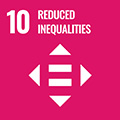- Docente: Stefania Mignani
- Credits: 7
- SSD: SECS-S/01
- Language: Italian
- Teaching Mode: Traditional lectures
- Campus: Bologna
- Corso: First cycle degree programme (L) in International Development and Cooperation (cod. 8890)
-
from Sep 16, 2024 to Dec 11, 2024
Learning outcomes
The course aims to offer students the basic tools for a quantitative reading of economic and social phenomena At the end of the course the students know fundamental concepts of statistics useful for the analysis of simple datasets. In particular, students: -will acquire knowledge of the basic concepts of statistical methodology, both as regards the collection phase and that of data analysis and will be able to carry on a data analysis through the use of a personal computer.
Course contents
DESCRIPTIVE STATISTICS TOOLS: Types of variables. Statistical units, population and sample. Data collection and organization. Data matrices and frequency distributions. Graphical representations. Mean values: mode, median, quartiles, arithmetic mean. Main variability measures and concentration. Statistical indices. Introduction to bivariate analysis. The relationship among two variables: association. The relationship among two variables: covariance and linear correlation. The simple linear regression model.
PROBABILITY: random events and sample space. Axioms of probability. Conditional probability. Density and probability functions of a random variable; expected value and variance of a random variable. Bernoulli and Binomial distributions. Normal distribution and t-Student distribution.
Readings/Bibliography
S. Borra, A. Di Ciaccio. Statistica – metodologie per le scienze economiche e sociali, quarta edizione, McGraw-Hill, Milano, 2021
Lessons on Virtuale
Teaching methods
Lessons, exercises and case study
Assessment methods
Written examination consisting in exercises, multiple-choice items and open-ended items. During written examinations, students have the possibility to bring a a paper with main formulas download from VIRTUALE.
The exam will last one hour.
There will be a partial exam after the end of the first part of the course with the same modalities. t is possible to take the second partial test only if in the first a grade higher than 16/32 is obtained.
The examination rules apply for both students attending and not attending classes.
Teaching tools
slides, exercises and data
There will practical acitivities ttah will be recorded
Office hours
See the website of Stefania Mignani
SDGs



This teaching activity contributes to the achievement of the Sustainable Development Goals of the UN 2030 Agenda.
